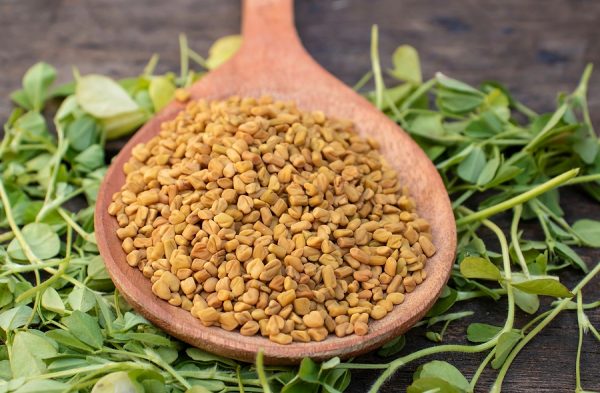Did you know that the older you are, the more likely you are to have type 2 diabetes?
It’s true. Nearly 30% of adults 65 and older are diabetic. And about another 50% have prediabetes. This means about eight out of every 10 seniors have blood sugar problems. Even worse, many older adults with these metabolic disorders don’t even know it!
One of the biggest problems with diabetes is that it causes serious damage to your body that can lead to heart disease, vision loss, kidney disease and nerve damage.
Sadly, people who don’t know they have the disease often find out about it after they’ve experienced a serious cardiovascular event, like a stroke or heart attack.
So if you want to preserve your health, the first thing that has to happen is getting a diagnosis.
One of the tests I use here at my practice is the “hemoglobin A1C”. Most folks just call it HbA1c, or A1c. It’s a simple blood test that shows your average blood sugar levels over the previous three months.
In layman’s terms, the HbA1c counts the number of red blood cells attached to sugar. For example, a result of 6% means that six red blood cells out of every 100 are attached to sugar.
Here’s what your HbA1c levels mean for diabetes risk:
- Normal (no diabetes): Less than 5.7%
- Prediabetes: 5.7% to 6.4%
- Diabetes: 6.5% or higher
If you are diagnosed with prediabetes or diabetes, the second thing you need to do is learn how to manage your blood sugar.
My Go-To Secret for Lower Blood Sugar
Diabetes can often be controlled by eating healthy meals and staying physically active.
Limiting or avoiding high-glycemic foods – particularly sugars, grains and foods that come in packages – is vitally important to your metabolic health. Your meal focus should always be on fresh plant-based foods along with some clean, healthy protein choices.
But if you need more help to maintain healthy blood sugar, my go-to secret for people with adult-onset diabetes is a combination of cinnamon and fenugreek.
Just six grams of cinnamon daily can cut your blood sugar levels by almost third. It also slashes triglycerides and LDL by about the same.
This is great news if you’re diabetic, prediabetic or suffering from metabolic syndrome. It means cinnamon can help protect you from those diabetes-related cardiovascular risks. And since people with diabetes have a higher-than-average risk of having a stroke or heart attack, this gives cinnamon an important role in your life.
If a patient tells me they’re getting a heaping teaspoon of cinnamon in their food each day, great! But if they can’t manage to do that, I’ll recommend that they purchase cinnamon capsules and take them instead.
But before you grab a container of cinnamon and start sprinkling over the foods you eat, make sure it’s the right kind.
Cassia cinnamon contains something called coumarin. Coumarin can have adverse side effects and, as a food additive, is banned in the United States. But if it’s in a natural food, it’s not regulated. So make sure you look for Ceylon cinnamon, which is commonly known as the “true” cinnamon. It contains much lower levels of coumarin.
Never Underestimate the Power of Herbs and Spices
Fenugreek can also have a profound effect on blood sugar in diabetic patients. It appears to work by protecting insulin-producing beta cells in the pancreas from damage, which reduces insulin resistance and improves glucose control.
And while both cinnamon and fenugreek help lower blood sugar, the results are even better when you combine the two!
This combination is one of the simplest things you can do to control blood sugar, so never underestimate the benefits of adding more herbs and spices to your meals.
SOURCES:
Statistics About Diabetes. American Diabetes Association. Last updated 7/28/22.
National Diabetes Statistics Report. Centers for Disease Control and Prevention. Last reviewed 7/29/2022.
Drobek N, Sowa P, Jankowski P, Haberka M, Gąsior Z, Kosior D, Czarnecka D, Pająk A, Szostak-Janiak K, Krzykwa A, Setny M, Kozieł P, Paniczko M, Jamiołkowski J, Kowalska I, Kamiński K. Undiagnosed Diabetes and Prediabetes in Patients with Chronic Coronary Syndromes-An Alarming Public Health Issue. J Clin Med. 2021 May 5;10(9):1981.
Bjarkø VV, Haug EB, Sørgjerd EP, Stene LC, Ruiz PL, Birkeland KI, Berg TJ, Gulseth HL, Iversen MM, Langhammer A, Åsvold BO. Undiagnosed diabetes: Prevalence and cardiovascular risk profile in a population-based study of 52,856 individuals. The HUNT Study, Norway. Diabet Med. 2022 Jun;39(6):e14829.
Khan A, Safdar M, Ali Khan MM, Khattak KN, Anderson RA. Cinnamon improves glucose and lipids of people with type 2 diabetes. Diabetes Care. 2003 Dec;26(12):3215-8.
Neelakantan N, Narayanan M, de Souza RJ, van Dam RM. Effect of fenugreek (Trigonella foenum-graecum L.) intake on glycemia: a meta-analysis of clinical trials. Nutr J. 2014 Jan 18;13:7.
Baset ME, Ali TI, Elshamy H, El Sadek AM, Sami DG, Badaw MT, et al. Anti-diabetic effects of fenugreek (Trigonella foenum-graecum): A comparison between oral and intraperitoneal administration – an animal study. Int J Funct Nutr. 2020;1:2. Yassin R. Evaluation of the effectiveness of cinnamon, fenugreek and their combination on patients with type 2 diabetes in Basrah. The Medical Journal of Basrah University. 2019.






